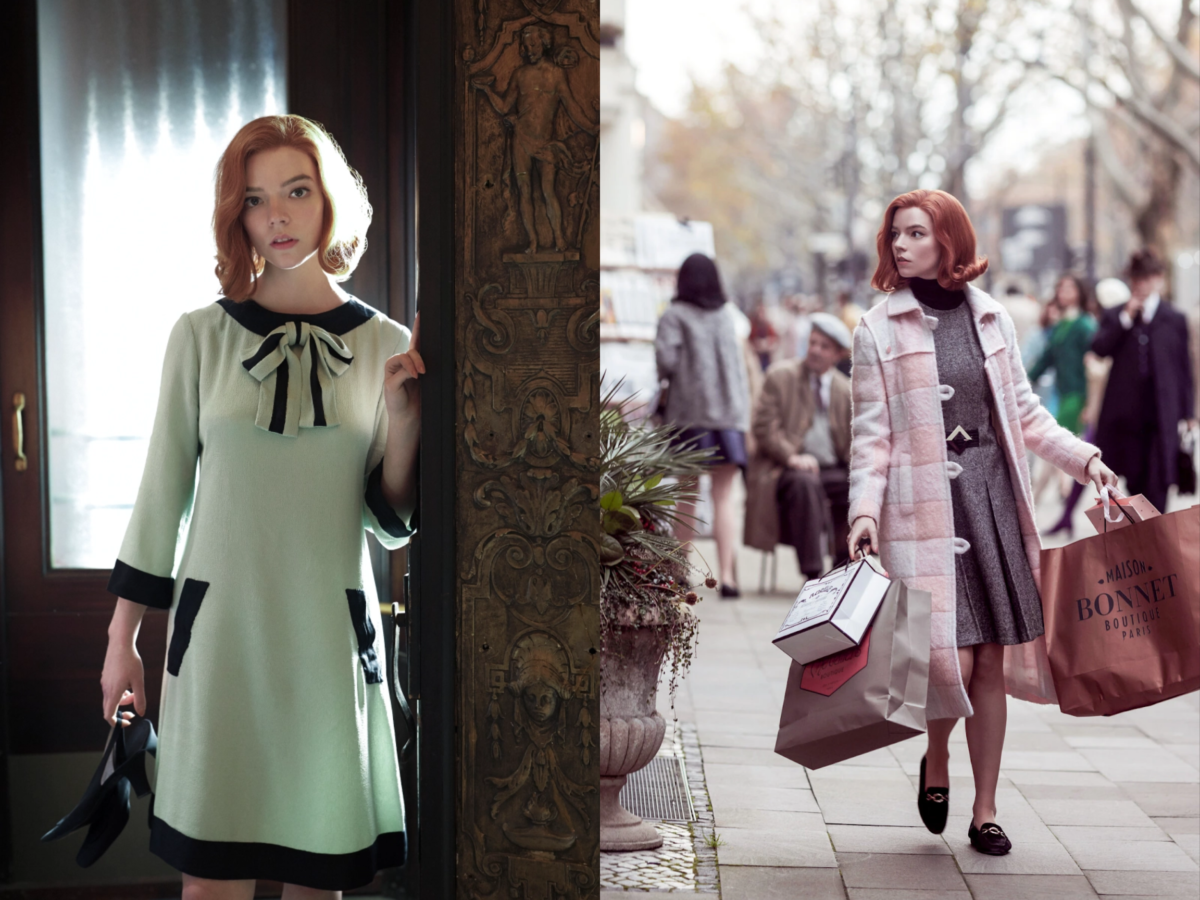It’s officially holiday season, which means basic Netflix romcoms about Christmas couples in a pandemic-free land are constantly being churned out, to our 3 a.m. guilty pleasure delight.
“The Queen’s Gambit” is anything but that. Adapted from Walter Tevis’ novel of the same name, the series tells the coming-of-age of Beth Harmon, an eight-year-old girl with unpacked family trauma, a quiet demeanor and a raw talent for chess.
From forfeits to fashion to feminism, “The Queen’s Gambit” is a timeless bildungsroman set in the ’60s. It’s as precise as period dramas come, sincere in its acting and somehow more riveting than Sunday night football.
After a car crash kills her single mother but leaves her unharmed, Beth is sent to an orphanage where she meets Jolene, an older girl who has accepted her fate of never being adopted because she is Black; Mr. Shaibel, an emotionally closed-off janitor who teaches her to play chess; and addictive pale green tranquilizer pills. Eventually, Beth is adopted and leaves with a newfound desire to experience the rest of the world (or at least, the rest of Lexington, Ky.).
Playing the silently hotheaded ginger from age 15 and up, Anya Taylor-Joy perfectly conveys that it’s a man’s world, and not just when it comes to chess.
Taylor-Joy gracefully walks the line between being likeable towards the audience and selfish yet desirable towards her supporting crew of dorky, charismatic grandmasters. We watch her grow up as both a chess player and a person, eventually outgrowing her circle-skirted high school bullies.
Costume design here is impeccable, not only for any Vogue editor, but for movie buffs seeking character development. Beth replaces the potato sack school uniforms for Ben Snyder’s discounted blazers and finally, the Parisian geek chic aesthetic. Thicker eyeliner accentuates her substance-related spiral, a pale green dress with forest accents takes inspiration from the tranquilizers she is so reliant on and her final piece — the white queen showstopper — does more than capture ’60s fashion. Beth’s tumultuous character and guarded mind is brought to life with dramatic changes in attire.

Outfits aren’t the only thing “The Queen’s Gambit” gets right. When it comes to depicting niches in film, Hollywood couldn’t care less (think of the pain archaeologists endure when they see on-screen shipwrecks, or cellists upon watching “Cruel Intentions”). But with National Master Bruce Pandolfini and Grandmaster Gary Kasparov as the chess technical consultants for this show, the gameplay isn’t just authentic, it goes to painstaking lengths to present a host of Easter eggs for any chess aficionado. Can you spot the Caro-Kann defense or the Paul Morphy/Duke Karl homage?
With electrifying chess sequences and cute department store shopping spree montages, it is ultimately Beth’s relationships which give us unfashionable, amateurish watchers an emotional stake in Beth’s life. Our hearts wrench for scenes of a lonely Beth, eyes glazed with tragedy, and skip during public displays of companionship — witty banter, bona fide pep talks, when Beth tells Benny she “likes his hair.” These dynamics could only happen with the talented, cohesive ensemble that includes Thomas Brodie-Sangster (Newt from “The Maze Runner”), Bill Camp (Primetime Emmy Award Winner for “The Night Of”) and Harry Melling (that’s right, it’s Dudley Dursley from the Harry Potter series).
As most “sports” dramas go, there are certainly tropes, namely the token POC supportive best friend and an extremely protagonist-centric universe. The rebellious Jolene whom Beth befriended decades ago suddenly swoops in when Beth needs her most. While Jolene contends that she is not Beth’s “guardian angel” and hints at her own prominent future, one cannot help but wonder if Jolene’s purpose is solely symbolic. Indeed, there is rarely a moment when Beth is not the center of the screen.
Even so, “The Queen’s Gambit” flawlessly executes Beth’s multi-dimensional character arc, nimbly avoiding the “she’s not like other girls” cliché. This, coupled with Benny’s bad boy persona, illustrates that no, geniuses don’t have to be worshipped as geniuses — they can be fashionable, carpool karaoke-loving humans. When a female reporter badgers Beth with questions about what it’s like to play chess with men, the prodigy replies that she doesn’t notice, much less care. After Beth loses her virginity, she calmly smokes a cigarette as the picture of elegance. A traumatized genius, tortured addict and seductive player, Beth represents every alluring male character in classic cinema and is a rare example of an on-screen woman who is completely in control of her sexuality.
With all that said, will the series return for a second season?
Spoiler alert — probably not.
This season ended when the book did, and while limited series are occasionally renewed, it is both fulfilling and disappointing that the creators are perfectly satisfied with where things are at.
While Beth’s future remains uncertain, her story has undoubtedly inspired millions around the world. Even fictional, “The Queen’s Gambit” envisions a world where little girls hold their ground against formidable opponents and where the end is never truly the end. Beth Harmon is an icon among chess connoisseurs and ’60s fanatics, but is also an embodiment of all that is 2020. She may be defeated once, but never twice. She may have kooky, emotionally charged moments, but her passion and stubborn determination prevail time and time again. Enjoyable with brilliant acting, killer suspense and an aesthetic film palette, most of all, this period series gives me hope for the future, knowing that it is never truly the end.
Contact Nicole Tong at nwtong ‘at’ stanford.edu.
